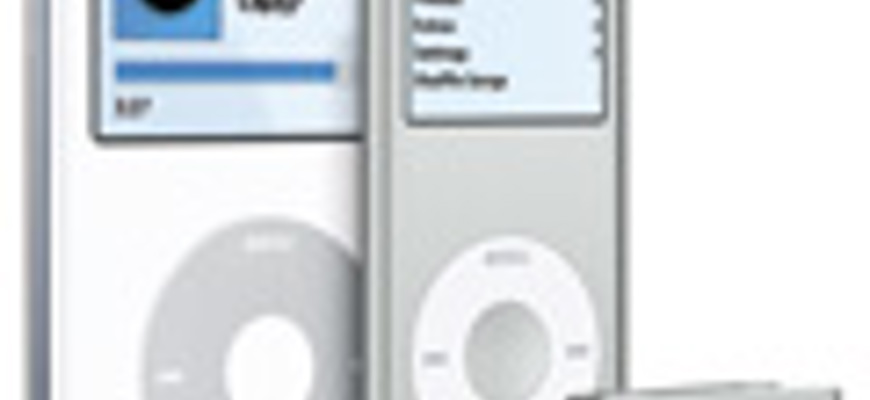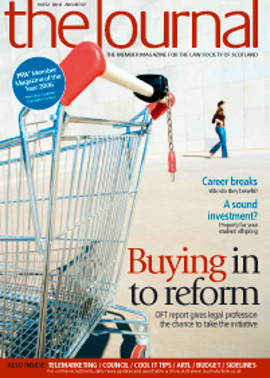Cool IT for hot lawyers

Most lawyers, if not quite technophobes, have a limited knowledge of technology. Do you have a cellphone with 500 functions, about five of which you know how to use? If so, you are members of a very large club. If you find yourself asking your 10-year-old for assistance to watch a DVD, you are far from alone.
Many lawyers wish they were more adept at technology, knowing that it can facilitate efficiency in their offices. Really, it is not always difficult or costly to implement. In addition, there are some cool gadgets that can make you, well, kind of hot. You may even impress that 10-year-old.
Digital cameras
There should be a digital camera in almost every law office. You might use it to take pictures of an accident scene, a crime scene, a construction site in a contract dispute, or just your good-looking staff to post to your website.
As a minimum, you should purchase at least a 5 megapixel camera. In general, the higher the megapixels, the better the resolution of an image printed at a certain size. You almost can’t go wrong with any of the name brand cameras such as Nikon, Canon, Sony, Kodak, etc. If you can afford it, get a 7 megapixel camera, which should last several years and is capable of producing good-sized clear exhibits.
On zoom capability, look for the optical zoom setting – the capability of the lens optics. Normally, values in the 3x or 4x range are more than sufficient. Some manufacturers tout 15x or 20x zoom capability, but that’s the digital zoom setting. This uses electronics to get the high magnification factors and quality is less than optimal at the high end.
Many digital cameras also allow you to take motion pictures and store them in MPG, AVI or MOV formats. If you are going to be doing a lot of motion picture recording, however, get a digital video camera, which is specifically designed for video recording.
Image organisation
You should have some method in which to organise your graphic files. You’ll want to keep your photos of the accident locus separate from your family shots at Christmas. Lest you think this is a small point, we have seen a colleague in a tutorial accidentally pull up a photo of an unclothed young lady. This is a very big “whoops”.When you copy the photos to your computer, create a folder structure and reference them to the particular case. It also helps to name the files descriptively rather than through the camera’s an automatic naming scheme. It is much easier (and faster) to access a picture named “Main street looking south.jpg” than to recall what one named “DCS00129.jpg” is about.
An excellent and free (lawyers love free!) photo organisation software is Picasa by Google (http://picasa.google.com). Picasa provides an easy interface to sort and describe your image collections. You can also touch up your photos and even burn them to a CD.
Thumb drives
USB thumb drives, flash drives, jump drives and pen drives are all names for small portable storage devices, about the size of your thumb. They fit into the USB port of your desktop or laptop. Think of them as large size electronic floppy disks. They come in sizes from 16MB all the way up to a whopping 16GB.
Since they are portable, thumb drives are great for copying data from your work computer to take home. We regularly copy our PowerPoint presentations to a thumb drive as a backup when we lecture. If our laptop dies, we can borrow another one. Reference materials and special utility software are also excellent candidates for the thumb drive.
Data security is an important consideration. These devices are easy to lose since they are relatively small. If carelessly tossed in a pocket, it is remarkably easy to pull out your car keys and leave your thumb drive (with all its confidential data) in the car park. Several manufacturers provide software (usually via their website) that allows you to encrypt the data, or provide a portion of the drive to store encrypted data. Some really cool thumb drives even have biometric access. Just make sure that you scan in at least two fingers/thumbs, in case of accidents to one!
The BlackBerry killer
We affectionately call our Palm Treo 700w devices the BlackBerry killer. A major problem with the BlackBerry is cost. Its manufacturer, Research In Motion (RIM), requires the use of a BlackBerry Enterprise Server (BES) to facilitate integration of the corporate email server and the BlackBerry service. There is a cost for the BES software and the hardware to run it on. Many small and medium-sized firms in the US have consequently avoided the BlackBerry, and several large firms are considering alternatives.The Treo 700w (or 700wx) is a Windows Mobile 5 device. Any such device with the Microsoft Messaging and Security Feature Pack can connect with an Exchange 2003 server with Service Pack 2 and support the “Direct Push” technology. This complete implementation is at no additional cost and requires no additional server. As an added bonus, you can remotely wipe the data from the Treo 700w if it is lost or stolen. We have first hand experience with the Treo 700w and Direct Push. We absolutely love it, with the minor caution that every so often you have to “reset” your phone. After all… it is Windows-based, so why shouldn’t it require a periodic reboot just like your computer?
iPods
The iPod isn’t just for music any more. The latest versions can store video clips along with music, podcasts, digital photos and audiobooks. The podcast is downloaded to the iPod for later playback. This is the leading edge of legal tech these days. Many lawyers now consider the iPod a “must have” device, especially if they have long commute times.
The iPod can be used to store any type of file and even be the destination for your backup files. The portability allows you to backup your office computer to your iPod and move the data off-site. One caveat (as with any portable device): make sure the iPod is charged prior to use. One of the authors was recently caught out on a long flight…
Metadata scrubbers
The careful lawyer will want to make sure that a Word or similar document sent to the client, court or opposing firm is clean of metadata so that earlier versions, comments, etc are not recoverable. Almost everyone has heard horror stories such as court briefs with the recoverable draft comments “Judge X isn’t very bright, but even a fool wouldn’t buy this argument.”
There are several products to scrub the metadata, which vary in cost and effectiveness. Microsoft provides a free utility, but it only works with Office 2003. Our personal recommendation is Metadata Assistant by Payne Consulting (www.payneconsulting.com), which fully integrates with the Office suites. If you email a Word document as an attachment, Metadata Assistant will prompt you to scrub the metadata or send it without cleaning. This feature by itself makes Metadata Assistant worth investing in. It is idiot-proof enough that the lawyer half of our duo has been saved from herself more times than she can count
Desktop search engines
Ever need to find something on your computer when you have no idea what the file name is? You can use the “find” function of Windows, but there are many alternatives that are much faster and potentially more accurate.
One of the best known is Google Desktop. This is free (as we said, lawyers love free) for personal and internal business use. You install Google Desktop and then configure it to point to certain folders and file types. Google Desktop indexes the files to aid in the search speed. Google Desktop does have its limitations, so take it for a test drive and see if you need something more robust.
X1 (www.x1.com) and dtSearch (www.dtsearch.com) are two excellent commercial versions of desktop search software. Both are widely used and very efficient. A number of our law firm clients have implemented these tools and regard them as invaluable.
Laptop locks
It is just amazing to us that many colleagues leave their laptops in hotel rooms without securing them. All modern-day laptops have a locking slot to accept a laptop lock. This is a cable device with a key or combination lock at the end. The cable is wrapped around a secure object in the hotel (perhaps the bed frame) and locked to the laptop. In case you hadn’t heard, laptops are the number one stolen item at airports and hotels.
Secure laptops
It seems like the latest craze is to have your laptop stolen with confidential client information. As a minimum, get yourself some encryption software and create a “virtual disk” on your laptop to store information securely. PGP (Pretty Good Privacy) is a very popular and secure encryption application that can meet your needs.
Investigate biometrics if you need even more security. Our ThinkPad laptops have biometric access just to get past the “power on” sequence. You swipe your finger across the reader, which retrieves the data from the laptop’s security subsystem. (As with all biometric devices, make sure you register at least two fingers, in case of lacerated digits.) To make it even more secure, the hard drive cannot be accessed if it is removed from the laptop.
Anti-spyware
AntiVirus software is no longer an option for modern computing. The latest threat to the computing environment is spyware and we now also need anti-spyware software for protection. Two very popular, effective and cost efficient products are Spy Sweeper by Webroot (www.webroot.com) and CounterSpy by Sunbelt Software (www.sunbelt-software.com). Both offer stand-alone consumer versions and centrally managed enterprise editions.
Not remotely secure?
Make sure you don’t transmit any sensitive information over a wireless or unsecured wired connection. If you access your company email via a web browser, make sure you at least use SSL (Secure Socket Layer) by having the https:// in the URL. If you connect to the firm’s network, use a VPN (Virtual Private Network), which provides a secure, encrypted connection for the data flow. Mobile hot spots are a boon to network infiltrators, so it is imperative to get enough training that you can connect securely. Mobile hot spots are seductive, especially when free, but they require a duty of care.
A little time and a little money can put you on legal tech’s forefront. Then when you’re lounging around a pool in Bermuda remotely and securely connected to your firm network, and the steel bands play “Hot, Hot, Hot,” they’ll be talking about you – a hot lawyer with cool technology. You may even impress that 10-year-old.
Sharon D Nelson and John W Simek are the President and Vice President of Sensei Enterprises, Inc, a legal technology and computer forensics firm based in Fairfax, Virginia, USA www.senseient.com
In this issue
- EAT breaks ground with TUPE insolvency ruling
- Top of the agenda
- Shaping a humane law
- Checkout the debate
- Family cases: another view
- A home of their own
- Break time
- Budget under the bonnet
- Holyrood - Scotland's voice in Europe?
- Ringing within the rules
- Cool IT for hot lawyers
- Future perfect?
- Case that makes the heart leap
- Green about the edges
- An eye on expenses
- The tail in the nail or ponytail
- Off on the right foot
- Scottish Solicitors' Discipline Tribunal
- Website reviews
- Book reviews
- Well drilled
- Good neighbour agreements - bad law?
- One small step for ARTL...
- Contaminated land: a reminder and a warning
- Contaminated land: a reminder and a warning (1)
- SFP: a tough call






